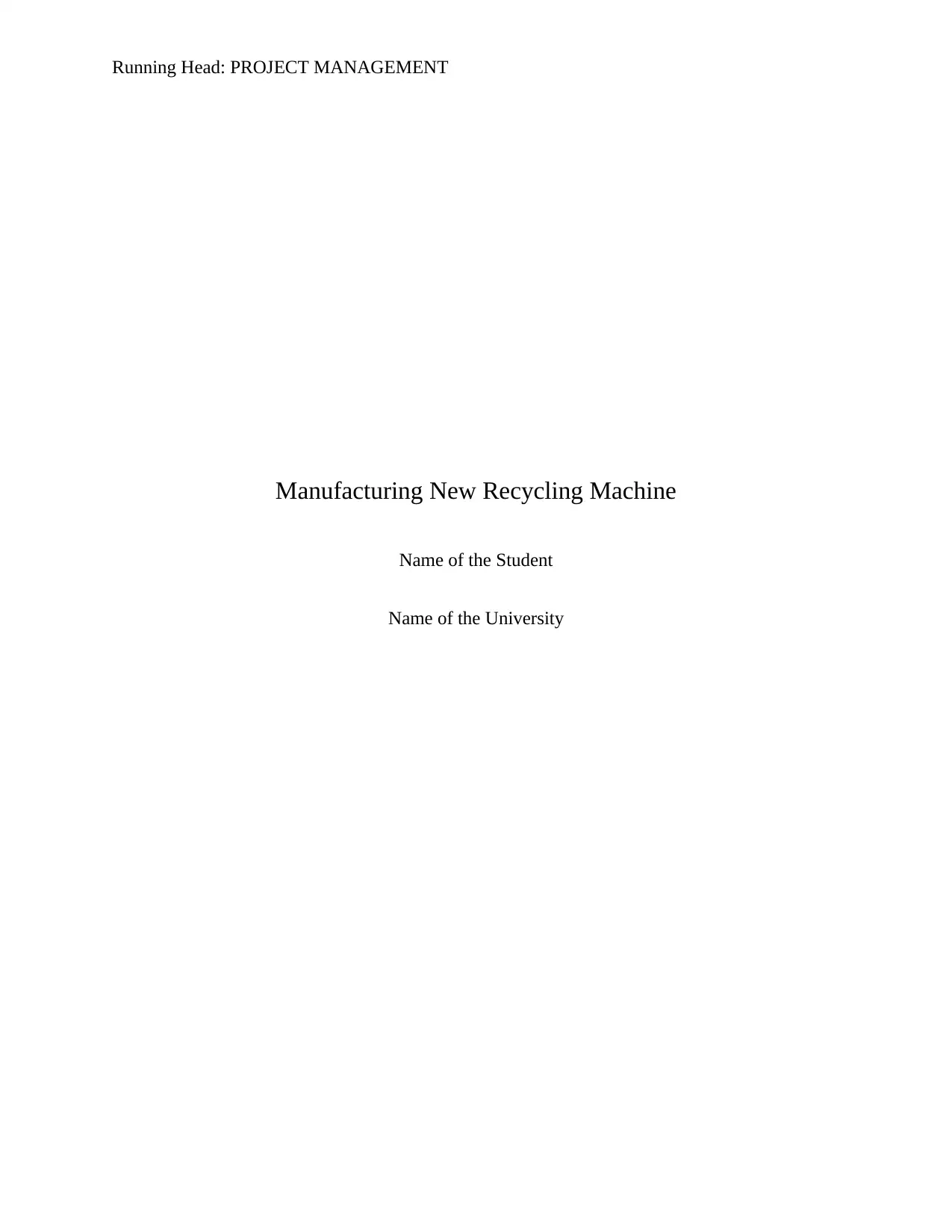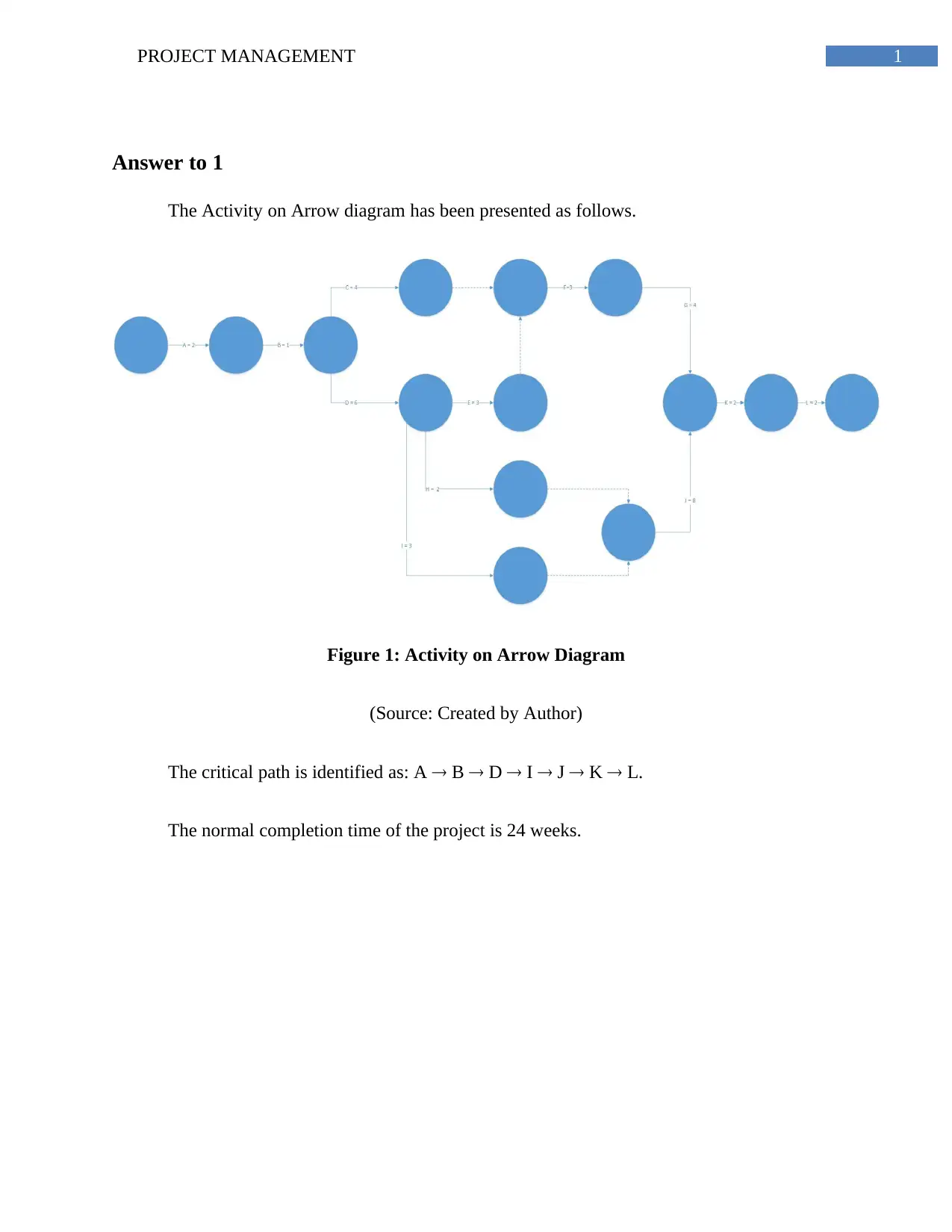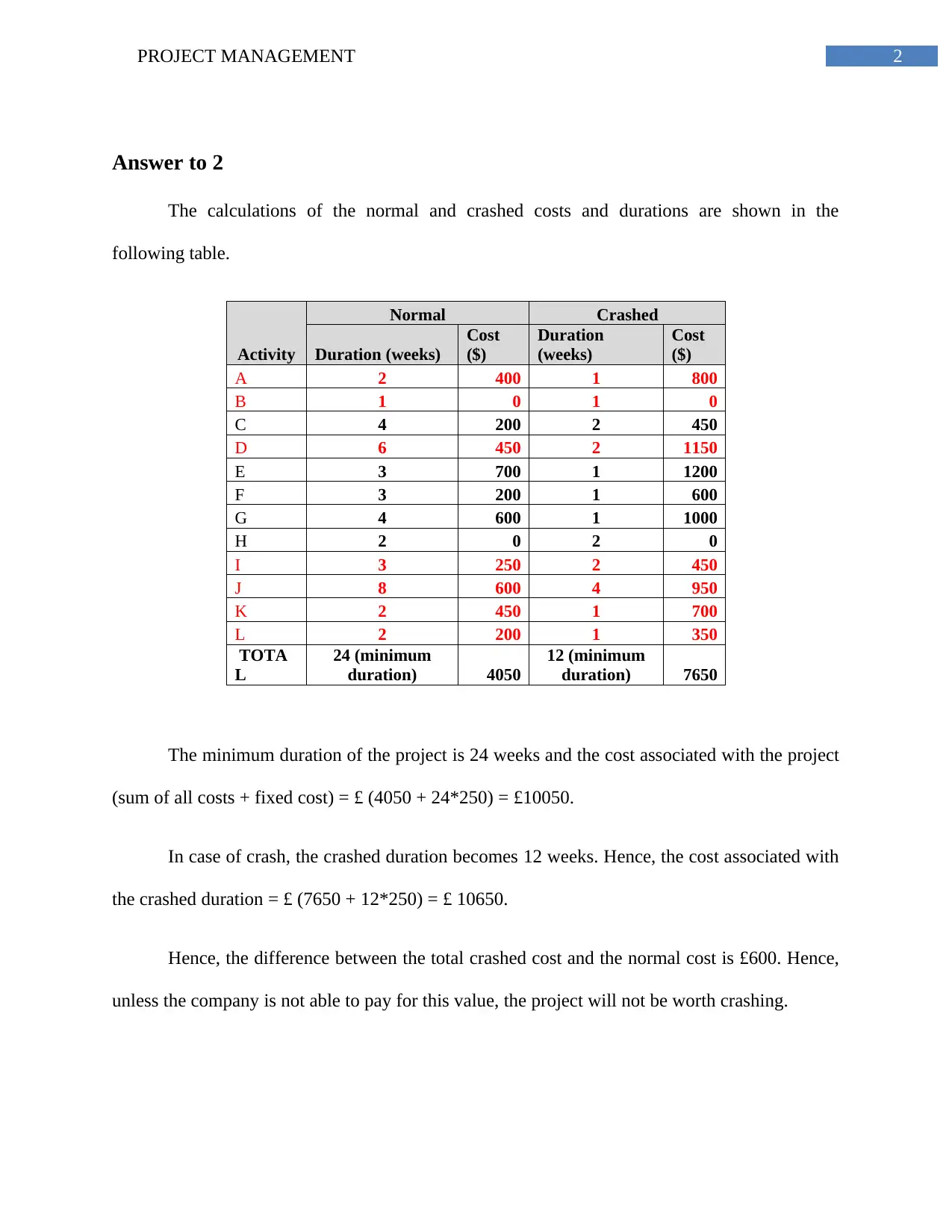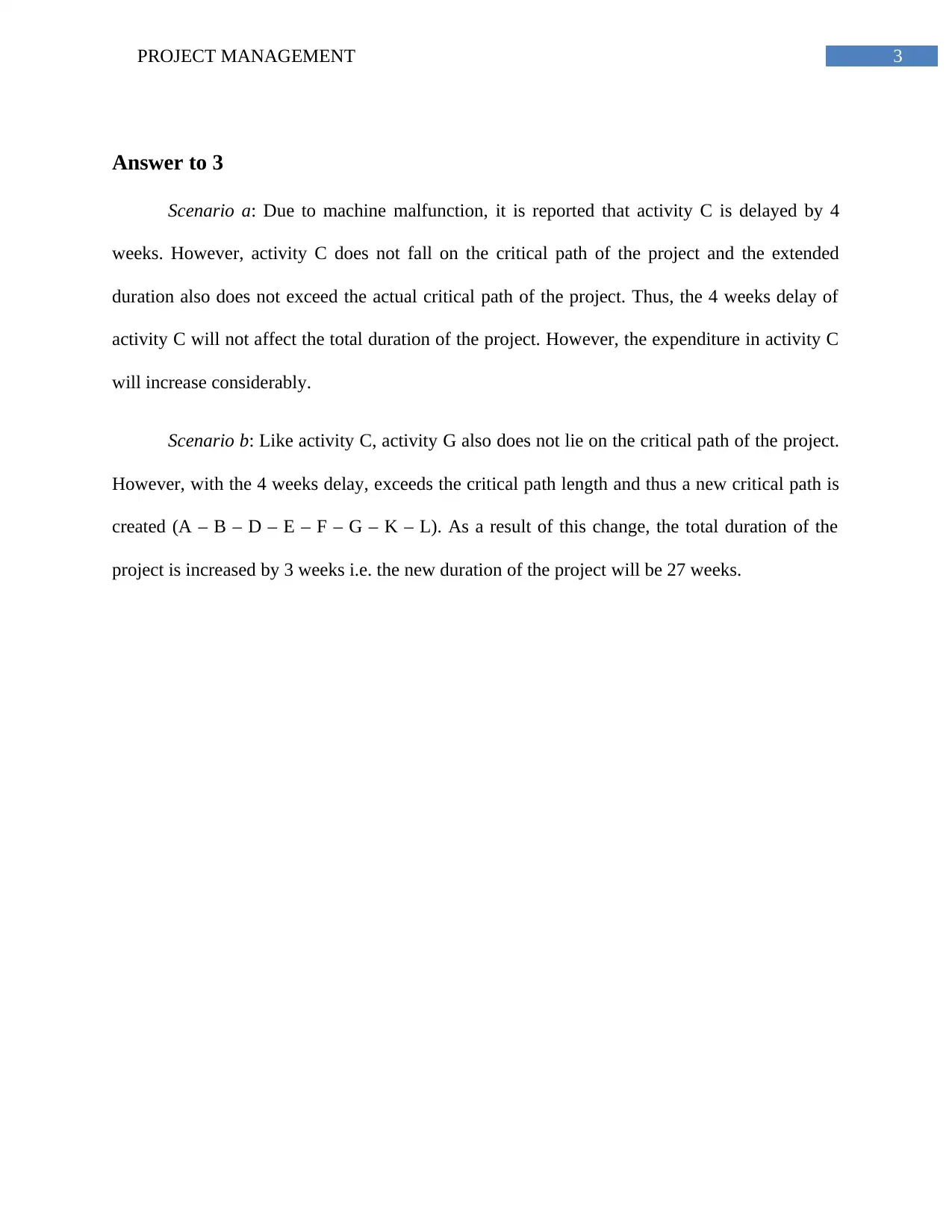Manufacturing Project: Recycling Machine, Cost & Time Analysis
VerifiedAdded on 2023/04/07
|4
|420
|156
Project
AI Summary
This project management solution analyzes the manufacturing of a new recycling machine, detailing the activities involved, their relationships, normal and crashed times, and associated costs. It includes an Activity on Arrow diagram to identify the critical path (A -> B -> D -> I -> J -> K -> L) and the normal completion time of 24 weeks. The solution calculates the normal and crashed costs, determining that crashing the project to its minimum duration of 12 weeks would increase the total cost. Scenarios involving delays in activities C and G are evaluated, with activity G's delay creating a new critical path and extending the project duration. The report assesses the financial implications of crashing the project and the impact of delays on the overall timeline and cost.
1 out of 4











![[object Object]](/_next/static/media/star-bottom.7253800d.svg)